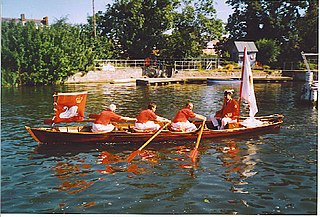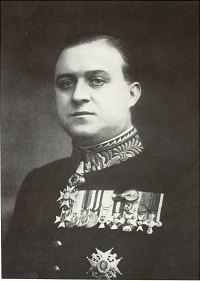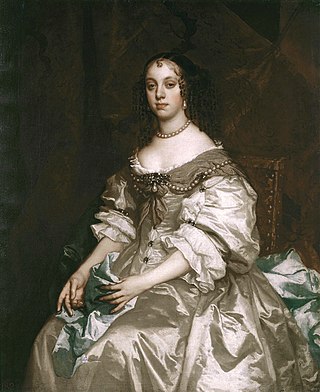The Keeper of the King's/Queen's Swans was a late medieval-founded office in the Royal Household of the Sovereign of England, later Great Britain and ultimately the United Kingdom. He was earlier called the King's/Queen's Swanmaster. The office existed to perform Swan-Upping marking and health-checking carried out using Thames skiffs on many of the non-tidal reaches of the River Thames in latter years from Sunbury-on-Thames passing Windsor, Berkshire to Henley on Thames. In 1993 it was replaced by two separate offices: Warden of the Swans and Marker of the Swans.
The keeper's office dates from the 13th century. [1] He was supported by three swanherdsmen. The principal duties of this official team of four people were to conduct the annual Swan-Upping on much of non-tidal reaches of the River Thames including Windsor. [2]
It was abolished in 1993, when it was replaced by two new offices, the Warden of the Swans and the Marker of the Swans.

The River Thames, known alternatively in parts as the River Isis, is a river that flows through southern England including London. At 215 miles (346 km), it is the longest river entirely in England and the second-longest in the United Kingdom, after the River Severn.

The Worshipful Company of Vintners, one of the Great Twelve City Livery Companies, retains close links with the wine trade.

Swan upping is an annual ceremony in England in which mute swans on the River Thames are rounded up, caught, ringed, and then released.

The Lord Warden of the Cinque Ports is a ceremonial official in the United Kingdom. The post dates from at least the 12th century, when the title was Keeper of the Coast, but may be older. The Lord Warden was originally in charge of the Cinque Ports, a group of five port towns on the southeast coast of England that was formed to collectively supply ships for The Crown in the absence at the time of a formal navy. Today the role is a sinecure and an honorary title, and fourteen towns belong to the Cinque Ports confederation. The title is one of the higher honours bestowed by the Sovereign; it has often been held by members of the Royal Family or prime ministers, especially those who have been influential in defending Britain at times of war.

Teddington Lock is a complex of three locks and a weir on the River Thames between Ham and Teddington in the London Borough of Richmond upon Thames, England. Historically in Middlesex, it was first built in 1810.
The Ecclesiastical Household is a part of the Royal Household of the sovereign of the United Kingdom. Reflecting the different constitutions of the churches of England and Scotland, there are separate households in each nation.
The Warden of the Swans is an office in the Royal Household of the Sovereign of the United Kingdom, created in 1993 when the ancient post of Keeper of the Kings Swans was divided into two new posts. The second is the Marker of the Swans.

Marker of the Swans, or Swan Marker, is an office in the Royal Household of the Sovereign of the United Kingdom.
The office of Royal Librarian, in the Royal Collection Department of the Royal Household of the Sovereign of the United Kingdom, is responsible for the care and maintenance of the books and manuscripts in the Royal Library, a collection spread across all the palaces, occupied and unoccupied. In addition to their role overseeing the librarians in the Royal Library, the Librarian is also Deputy Keeper of the Royal Archives and is responsible for the management of the Royal Archives and its collections.

Richard Preston Graham-Vivian was a long-serving English officer of arms at the College of Arms in London. He was the younger son of Sir Richard James Graham, 4th Baronet, and Lady Mabel Cynthia Duncombe.

Sir Guy Francis Laking, 2nd Baronet was an English art historian and the first keeper of the London Museum from before its opening until his death.
William Schaw was Master of Works to James VI of Scotland for building castles and palaces, and is claimed to have been an important figure in the development of Freemasonry in Scotland.

Emanuel Snowman OBE MVO was a British jeweller, local politician and Jewish community leader. He oversaw the opening of the London branch of the Llandudno jewellers Wartski, having married the daughter of its founder, Morris Wartski, and went on to become its chairman.

The Royal Households of the United Kingdom are the collective departments that support members of the British royal family. Many members of the royal family who undertake public duties have separate households. They vary considerably in size, from the large household that supports the sovereign to the household of the Prince and Princess of Wales, with fewer members.

The title of Principal Painter in Ordinary to the King or Queen of England or, later, Great Britain, was awarded to a number of artists, nearly all mainly portraitists. It was different from the role of Serjeant Painter, and similar to the earlier role of "King's Painter". Other painters, for example Nicholas Hilliard had similar roles with different titles. "Principal Painter in Ordinary", first used for Sir Anthony Van Dyck, became settled as the usual title with John Riley in 1689.

St George's Chapel at Windsor Castle in England is a castle chapel built in the late-medieval Perpendicular Gothic style. It is a Royal Peculiar, and the Chapel of the Order of the Garter. St George's Chapel was founded in the 14th century by King Edward III and extensively enlarged in the late 15th century. It is located in the Lower Ward of the castle.

Sir Frederick Treves, 1st Baronet, was a prominent British surgeon, and an expert in anatomy. Treves was renowned for his surgical treatment of appendicitis, and is credited with saving the life of King Edward VII in 1902. He is also widely known for his friendship with Joseph Merrick, dubbed the "Elephant Man" for his severe deformities.
The list of Diamond Jubilee Honours 2012 was released on 13 September 2012 and made appointments and promotions within the Royal Victorian Order to recognise contributions to the celebration of the Diamond Jubilee of Elizabeth II in 2012. The Royal Victorian Order is a dynastic order of knighthood recognising distinguished personal service to the Sovereign, and remains in the personal gift of the monarch.
The 1903 Birthday Honours were announced on 9 November 1903, to celebrate the birthday of King Edward VII that day. The list included appointments to various orders and honours of the United Kingdom and the British Empire.
The Royal Households of the United Kingdom consist of royal officials and the supporting staff of the British royal family, as well as the Royal Household which supports the Sovereign. Each member of the Royal Family who undertakes public duties has their own separate household.
The present Keeper of the Queen's Swans holds one of the most venerable offices in the kingdom; how venerable is not precisely known, but the office probably existed as early as the thirteenth century. Its full style was Master of the King's Game of Swans.